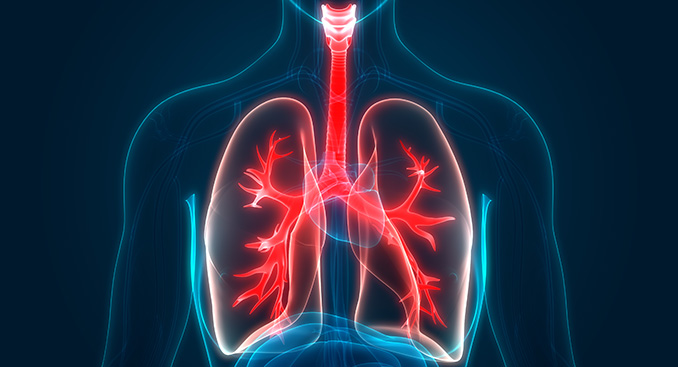- Community & News
- Service Line
New Technology Helps in Fight Against Lung Cancer

TriHealth is the first health system in the area that has invested in new technology to help identify possible lung cancers sooner than ever, which can increase the chances of survival, as symptoms for lung cancer often don’t appear until late stages, making a critical early diagnosis less likely for many. Craig Eisentrout, MD, with TriHealth Pulmonary Medicine and his team are able to biopsy potentially cancerous nodules before they become a problem.
“90 percent of patients get answers from this procedure,” says Dr. Eisentrout. “Prior to having the ION robot, the only option for many patients was surveil- lance with a watch and wait approach.”
This means some patients had to get regular scans and physicians would keep watch over them and wait to see if any spots got larger.
Dr. Eisentrout says the ION Robot also allows physicians to biopsy spots that they couldn’t get to before with other methods.
“The addition of the ION Robot is groundbreaking,” says Dr. Eisentrout. “It has really advanced the science and has opened up new avenues for patients who didn’t have other options in the past.”
How Does the ION Robot Work?
Patients are typically referred to Dr. Eisentrout by physicians who order scans for a patient and see something concerning on the lungs.
If a patient qualifies for the procedure, Dr. Eisentrout and the team use special software to map a path to the abnormality with the ION’s catheter. This approach makes it a safe procedure for the patient.
The ION robot uses a hollow catheter that allows very small instruments to pass through to areas of the lung that were often unreachable for biopsy without sometimes having to remove a piece of the lung. Those tools take samples in three or four different places to make sure it is getting what it needs for the biopsy.
“Pathologists come in during the procedure, preliminary results are immediate,” says Dr. Eisentrout. “We typically receive the final results in two business days, so patients get answers fast.”
The procedure is minimally invasive and does not affect patients too much. Other options for a lung biopsy may require a painful chest tube coming from the lung. Dr. Eisentrout says there is a less than one percent chance of a collapsed lung requiring a chest tube when doing a biopsy with the ION robot.
Who Qualifies for a Biopsy with the ION Robot?
Dr. Eisentrout says anyone who has a scan that shows concerning spots may be able to get a referral, but two groups should really be aware of the technology and the Lung Cancer Screening Program at TriHealth.
The first group is smokers. Dr. Eisentrout has a couple of guidelines for some who may be at a higher risk.
“If you are a smoker who has smoked the equivalent of one pack a day for 30 years, you may want to get screened,” says Dr. Eisentrout. “You should also think about it if you are a former smoker whohas quit in the last 15 years.”
The other group Dr. Eisentrout says are possible candidates for biopsy with the ION Robot are people who are currently under surveillance from a previous cancer.
Dr. Eisentrout says the ION Robot is just part of the Lung Cancer Screening Program at TriHealth.
“How are we going to save lives? It is a combination of the entire process: scan to screen, identify with ION Robot, and remove cancerous nodules with robotic surgery,” says Dr. Eisentrout. “We’re not going to stop until we’re sure we have done everything we can for each patient.”
Related Articles
- Cancer
- Conditions & Care
- Disease & Symptom Information
- Service Line